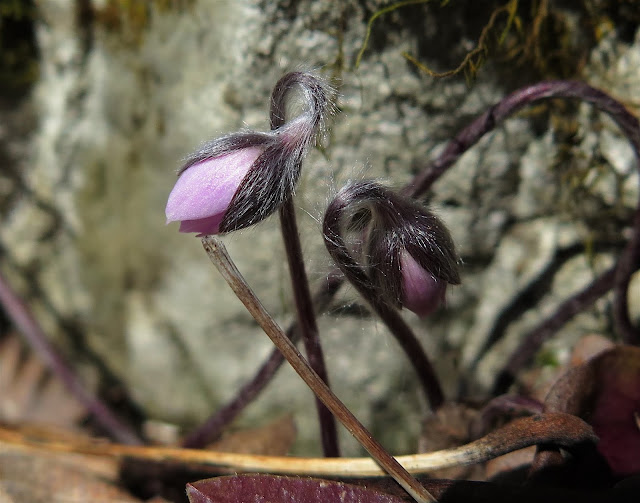Some think of the wee little non-native Mustard-family flower called Draba verna as just a no'count weed, but darn it all, it sure says "Spring!" to me. And so it did, too, to the noted naturalist Aldo Leopold, who wrote the following wonderful words about it in his 1949 book, Sand County Almanac:
"Within a few weeks now Draba, the smallest flower that blows, will sprinkle every sandy place with small blooms. He who hopes for spring with upturned eye never sees so small a thing as Draba. He who despairs of spring with downcast eye steps on it, unknowing. He who searches for spring with his knees in the mud finds it, in abundance.
"Draba asks, and gets but scant allowance of warmth and comfort; it subsists on the leavings of unwanted time and space. Botany books give it two or three lines, but never a plate or portrait. Sand too poor and sun too weak for bigger better blooms are good enough for Draba. After all, it is no spring flower, but only a postscript to a hope.
"Draba plucks no heartstrings. Its perfume, if there is any, is lost in the gusty winds. Its color is plain white. Its leaves wear a sensible woolly coat. Nothing eats it; it is too small. No poets sing of it. Some botanist once gave it a Latin name, and then forgot it. Altogether it is of no importance -- just a small creature that does a small job quickly and well."
Yesterday, I found uncountable numbers of this tiny unassuming plant filling a most unpromising stretch of dirt between the Wilton Mall road and the cinder-block wall of a BJ's Warehouse.
And I really did have to search for it "with [my] knees in the mud," since these flowers are so tiny they truly cannot be detected from any distance. But once I approached and peered more closely, I sure did find them, and "in abundance." Thousands and thousands of them!
With so many plants, I didn't feel too guilty about uprooting one, the better to photograph the entire plant -- flowers, stems, and basal rosette -- in one exposure. And then I tucked it back into its sandy soil.
Here's a closer look at those basal leaves that "wear a sensible woolly coat," as Leopold describes.
Also inhabiting this patch of unpromising dirt were clusters of another little "no'count weed" called Mouse-ear Chickweed (Cerastium vulgatum), its flowers so newly out of bud that the petals were not yet clearly displaying the deep clefts that normally distinguish these flowers.
Punctuating these carpets of tiny, almost invisible plants were occasional vivid sunbursts of Dandelions, another introduced wildflower that arises as early as possible every spring. This close-up photo reveals how generously it offers its pollen on slender scrolling pistils.
Encouraged by all this floral abundance, I dashed out to the Skidmore woods to visit the Sharp-lobed Hepatica plant I had found just breaking bud a few days ago. And lo! There they were: two pretty pale-purple flowers lifting their opened faces to the sun! The wildflower season is definitely upon us at last!

















































